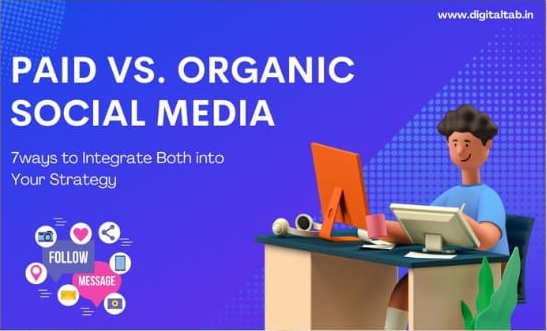Social media marketing has been developing very much in online business marketing in the last few days. So that’s why social media networks are popular for remarketing, customer-journey and different types of services today. From this blog, we will share information about paid social and organic social, Paid v/s Organic Social Media, and how to hybrid the paid and organic social media strategies. So keep on reading and see more.
If you want to learn more about Social Media strategy, you can consult the best digital marketing company.
What do you mean by paid social media?
When we pay for advertising and promoting things, it is called paid social media. It is a Social Media strategy that reaches a larger audience, targets real customers, and drives sales and conversion.
What do you mean by organic social?
Organic social media is any social media activity promoted without giving the payment. It is a free tool and Social Media strategy that helps build a connection with your target audience, and brand awareness.
Paid v/s Organic Social Media
Many people are thinking about the difference between Paid v/s Organic Social Media. So, let’s see the few difference between Paid v/s Organic Social Media; after that, you can easily understand.
1-Organic social media is the free but paid social media to take advertising costs.
2- With the help of organic social media, you can build relationships and spread the brand’s awareness. Still, you can target the ideal customers in paid social media, boost the real leads, and drive the conversion.
How can we integrate an organic and paid Social Media strategy?
1-No need to pay for all promotional posts:-
Paid v/s Organic Social Media: You pay for ads only when it helps you reach your KPI and helps you meet your business goals.
You don’t need to do every promotional post with paid advertising only. Now you can do it with organics too. However, If you feel that organic social media is not giving you a good response and not giving a good impression, you can use paid social media.
2- Update the organic campaign by use of paid data:-
Paid v/s Organic Social Media: After the paid campaigns, you have a large amount of data, and then you can use this data to build and optimize the organic results.
Let’s take an example; with the help of paid search data, you can frame your organic content. So, it is budget – a friendly way to use the search terms in your organic content that give you the best and desired results.
3-Use A/B testing for optimizing the post:-
Paid v/s Organic Social Media: We always say it, but as per experience, split testing is a step that we often skip. In addition, Before investing your social media budget in an advertisement, you have to look at many things. Such as, Testing your CTA (Call to Action), your copywriting, the visual placements you’ve placed, and even your target audience. Before investing a large amount of money, you should test different demographics (Location, age, more).
4- Target the ads to a similar organic audience:-
Paid v/s Organic Social Media: The more social presence you increase for your business, the more data you will have about ideal customers and audiences. For example, where they live, you can easily find the age, how many people are taking more interest, and how they face their life problems. All these things how you can help them. Then you just put all this information in it when you create your ad. Again, this is because this is where you can convey your quality-related information to the audience.
5- To stay with your audience by using the retargeting technique:-
Paid v/s Organic Social Media: Retargeting campaigns are considered great because you are retargeting where your audience already knows your business. Maybe people have come to your website. Have seen your profile. Even if they have discarded the shopping card, this retargeting is a good idea. They need a recall to convert them, and with the right advertising, you can convince them.
6- Measure your results by seeing the data:-
Paid v/s Organic Social Media: We know that if the campaign does not yield good results. Whether it is organic or paid, we suffer from many problems. So for this, you can use social media-related tools to tell you how you can get better results. Where do you need to change, and where do you not need to?. Along with this, you can check your organic review and paid content side by side with these analytics tools.
7-Automate and analysis much as possible:-
Paid v/s Organic Social Media: Automation and analysis are secret weapons for performing well in social media marketing consistently. The more you post, the better you will know which marketing effort is right for your strategy and which strategy is right for your appropriate audience.
You can use social media analytics tools to see how your post performs in these areas, like how many people are clicking on every post, and how many people are sharing it and leaving comments on it?. How many views are in your post, and how much does the audience like your post? If you want to know how to use Social Media analytics tools, consult the best digital marketing company.
Wrapping up:-
In this blog, we covered all the details about Paid v/s Organic Social Media and provided how to integrate paid and organic social media. As a result, you can get more benefits and find new ones without investing more money if you do. In addition, you can use the social media analytics tools that help track your social media activities, campaigns, and more.

